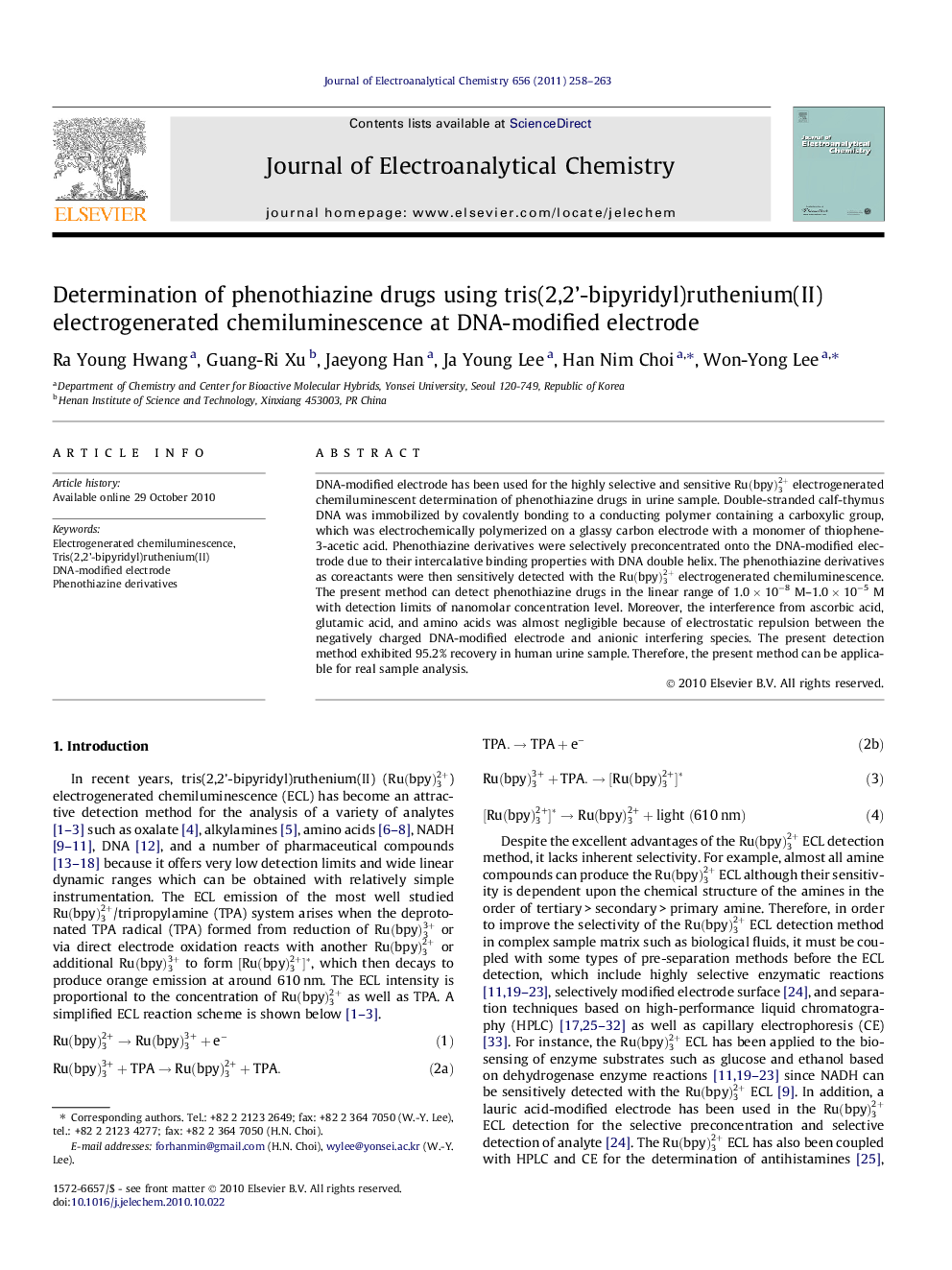| Article ID | Journal | Published Year | Pages | File Type |
|---|---|---|---|---|
| 219588 | Journal of Electroanalytical Chemistry | 2011 | 6 Pages |
DNA-modified electrode has been used for the highly selective and sensitive Ru(bpy)32+ electrogenerated chemiluminescent determination of phenothiazine drugs in urine sample. Double-stranded calf-thymus DNA was immobilized by covalently bonding to a conducting polymer containing a carboxylic group, which was electrochemically polymerized on a glassy carbon electrode with a monomer of thiophene-3-acetic acid. Phenothiazine derivatives were selectively preconcentrated onto the DNA-modified electrode due to their intercalative binding properties with DNA double helix. The phenothiazine derivatives as coreactants were then sensitively detected with the Ru(bpy)32+ electrogenerated chemiluminescence. The present method can detect phenothiazine drugs in the linear range of 1.0 × 10−8 M–1.0 × 10−5 M with detection limits of nanomolar concentration level. Moreover, the interference from ascorbic acid, glutamic acid, and amino acids was almost negligible because of electrostatic repulsion between the negatively charged DNA-modified electrode and anionic interfering species. The present detection method exhibited 95.2% recovery in human urine sample. Therefore, the present method can be applicable for real sample analysis.
